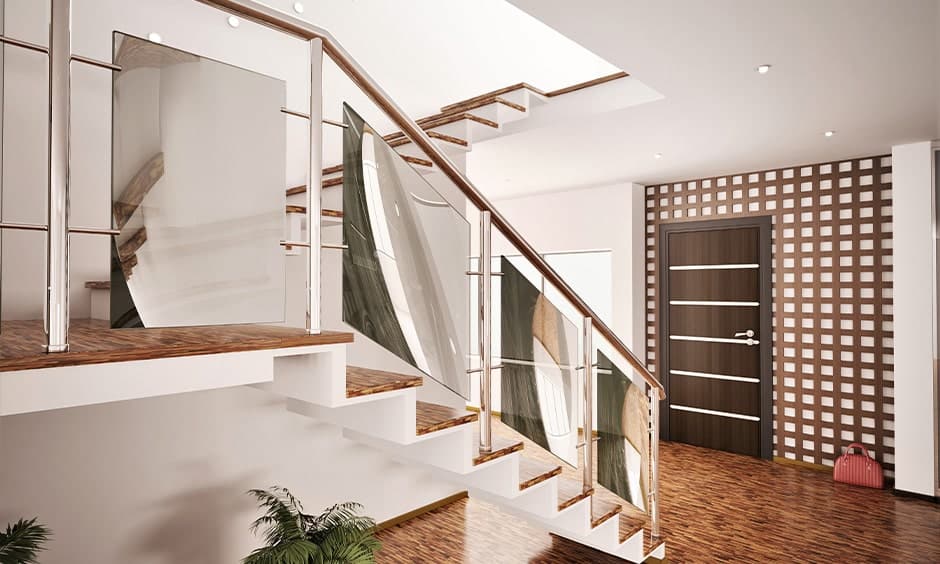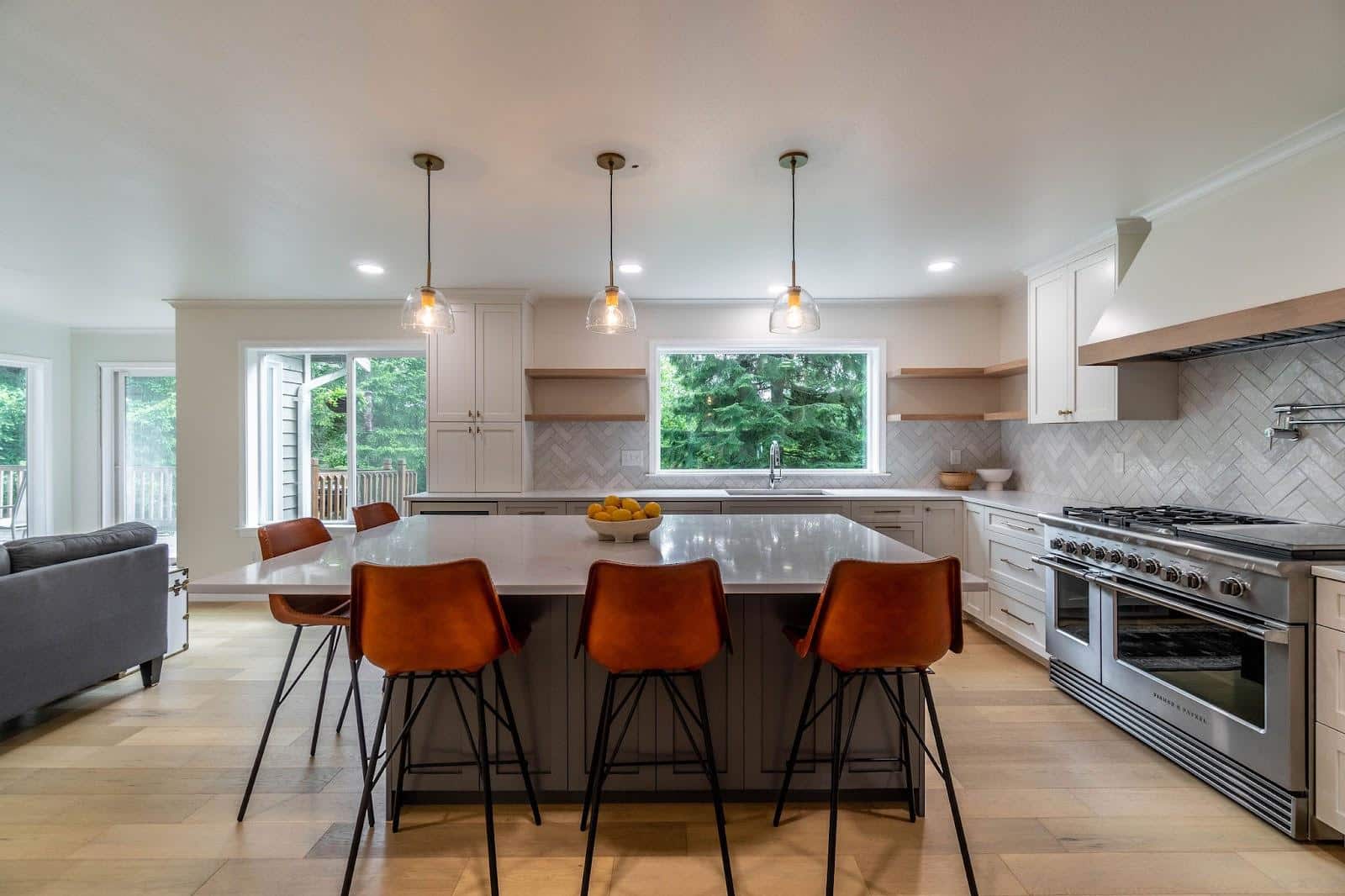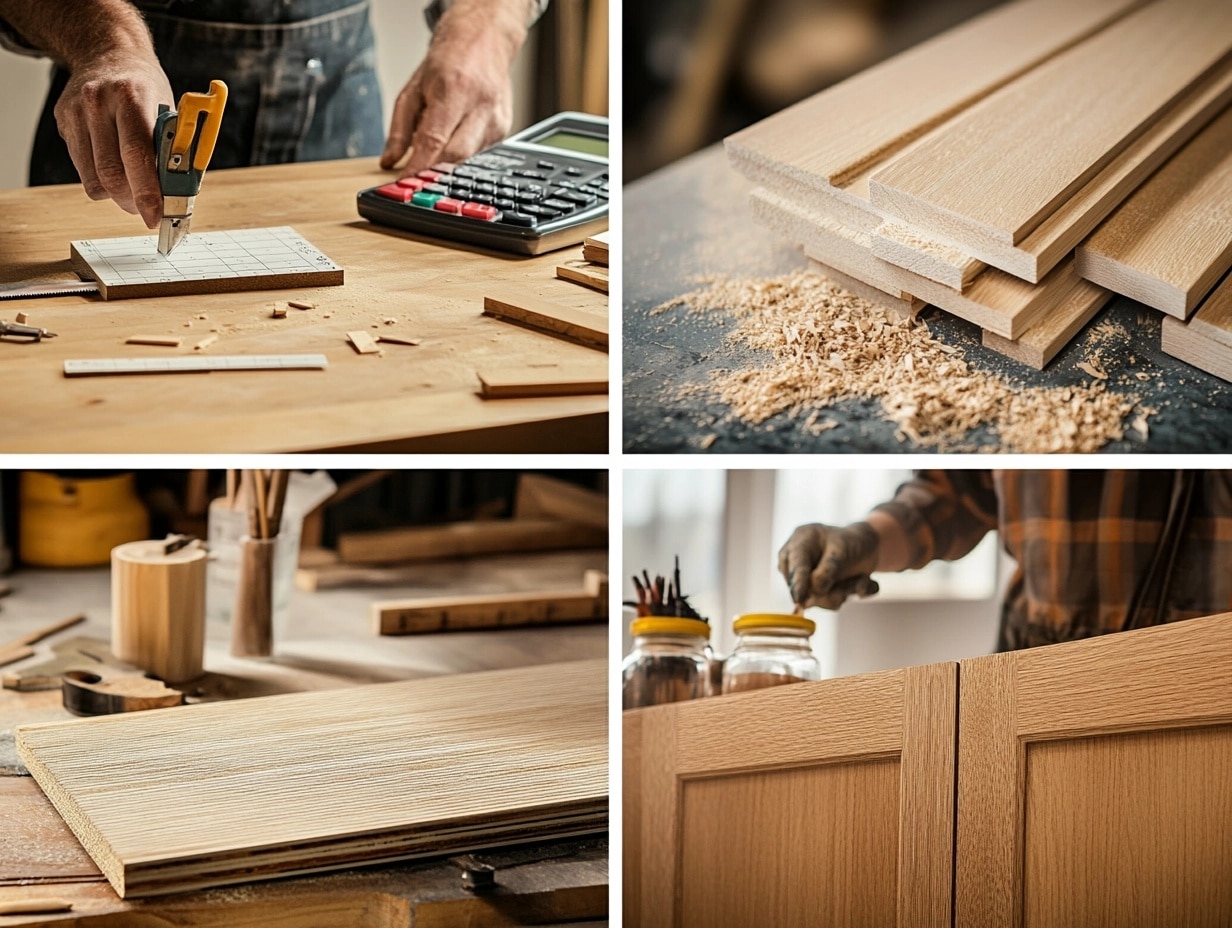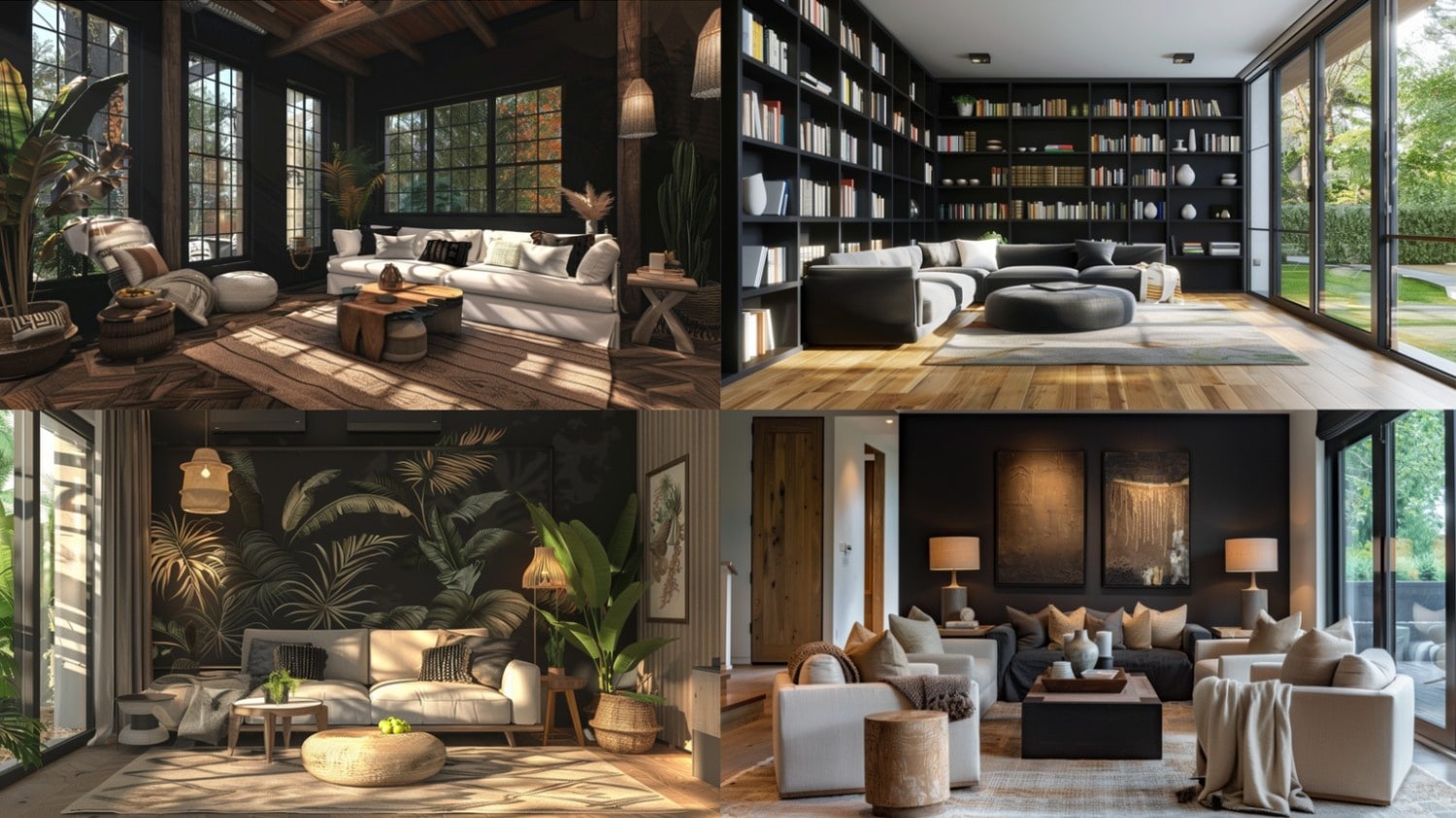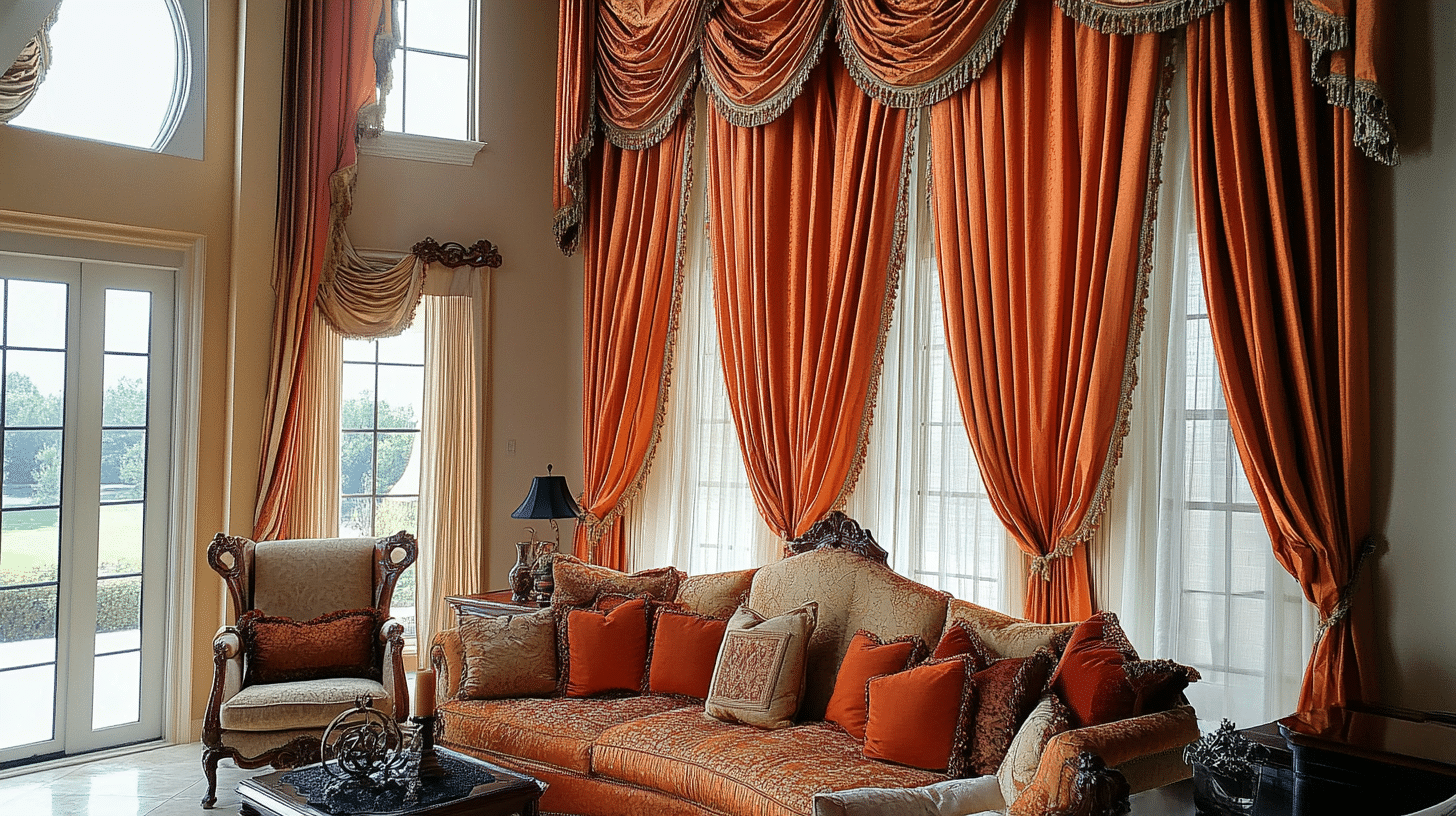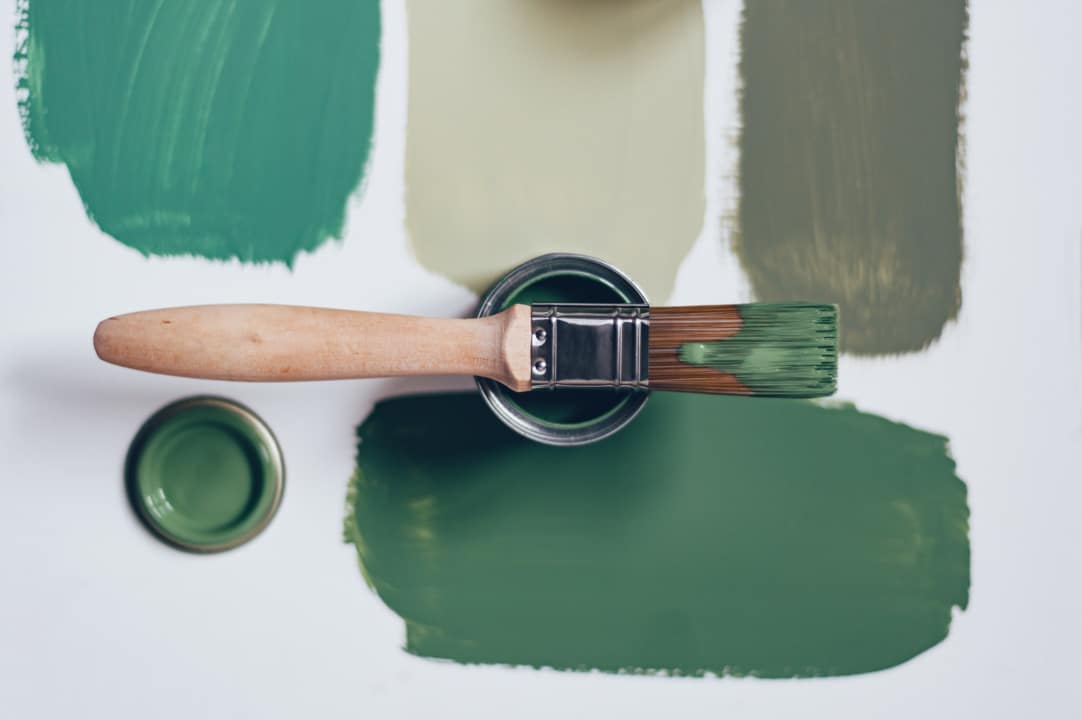How to Use Mirrors in Staircase Decor?
Mirrors serve both form and function in staircase decor. Visually, they make spaces appear larger and brighter. As decorative accents, they add light, interest, and the illusion of expanded dimensions to often cramped stairwells. Mirrors do not belong only in bedrooms but outside as well. They reflect beauty and glamor and beautify the space that surrounds them.
And just like other decorative elements or items, mirrors play good roles as decor pieces. Here are some creative ways to incorporate mirrors into your staircase decor ideas.
1. Create the Perception of Depth
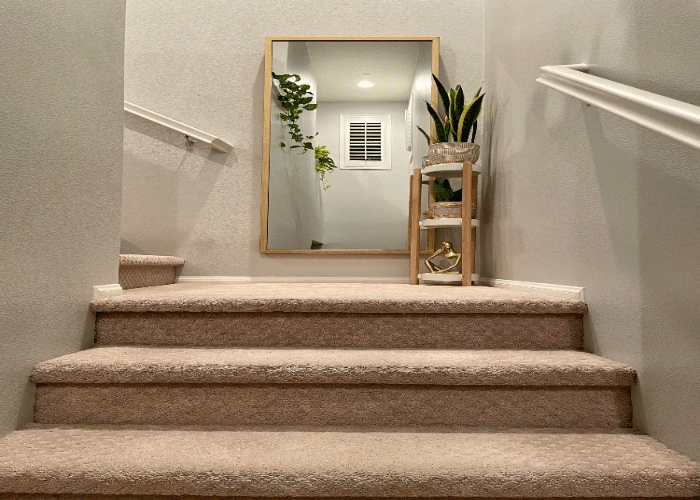
Hang a large mirror on the wall opposite the base of the staircase. It will reflect the stairs receding upwards, making the space appear deeper than it is. Position the mirror across from a landing to double the visual size of the area. Place matching mirrors at both the top and bottom of the stairs for an endless reflected effect when you look up or down.
Strategic positioning of staircase mirrors makes the area feel more expansive and grand rather than narrow and enclosed. Choose ornate antique-style frames or sleek modern ones to suit your decor.
2. Reflect Art or Architectural Details
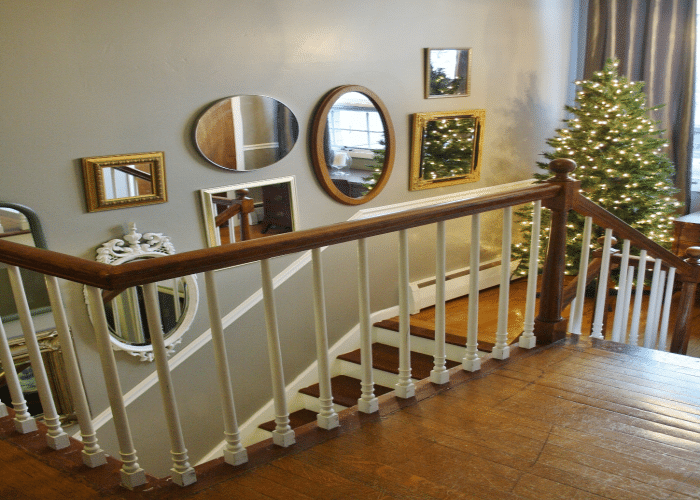
Place a mirror on the wall above a stair railing to reflect artwork, sconces or other decorative elements on the adjacent wall. The mirror thus doubles the visual impact of these features. Rectangular leaning or oval convex mirrors also borrow interesting architectural forms like arched doorways and angles.
Mirrors reflect, highlight, and draw attention to charming stairwell quirks and details. Ensure the mirror size properly fits the wall space and remains in proportion to adjacent architectural elements.
3. Enhance Natural Lighting
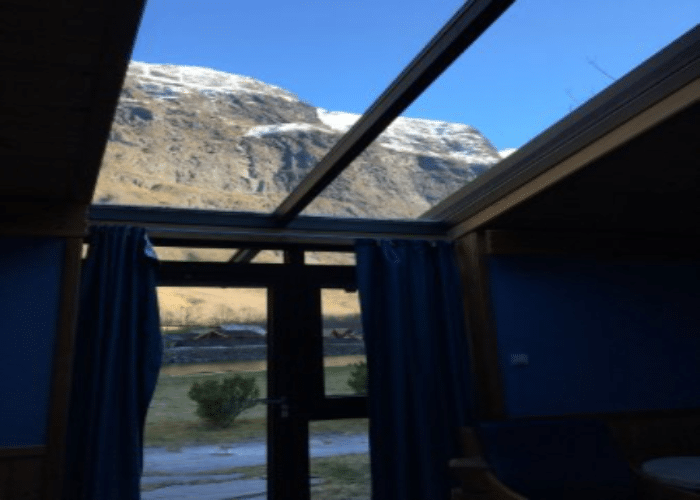
Take advantage of bright daylight from overhead windows and skylights by positioning mirrors to bounce and amplify natural light. Mirrors reflect streams of sunshine that may be directional or only hit certain parts of the staircase. They also reduce shadows in corners or areas with poor daylight access.
For safety, avoid placing mirrors directly across from windows as the glare can blind stair users. Go for softer diffused reflections by slightly angling the mirrors away from harsh glare.
4. Built-In Storage Mirrors
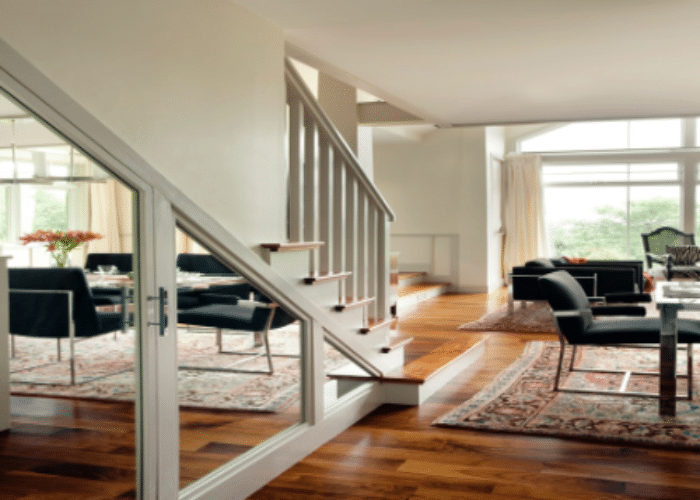
Conceal utilitarian storage spaces with mirrored cabinetry doors. This hides cluttered items while visually expanding the staircase. Built-in stairwell closets or cabinets with mirrored fronts reflect light into the area. Mirrored medicine cabinets recessed into walls also provide discreet storage without marring the decor.
Use mirrored strips or acrylic mirrors on closet doors if you don’t want the expense of full mirrored cabinets. Just keep storage tidy so a cluttered interior doesn’t ruin the effect!
5. Create “Invisible” Railings
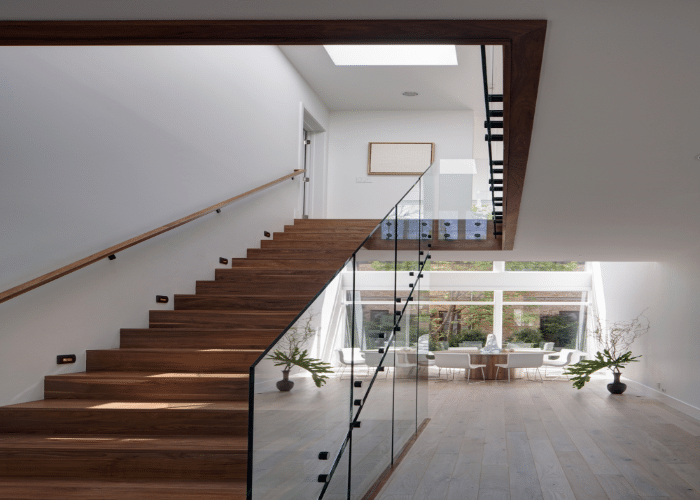
For a minimalist contemporary look, use beveled-edge mirrored panels in the railings instead of spindles or balusters. This makes the railing disappear, giving the impression of an open, floating staircase. It also makes a smaller stairwell seem more expansive.
Ensure railing mirrors have tempered safety glass to prevent major injury in case of breakage. Also, check building codes for stair railing requirements before doing an all-mirrored one.
6. Reflective Ceilings
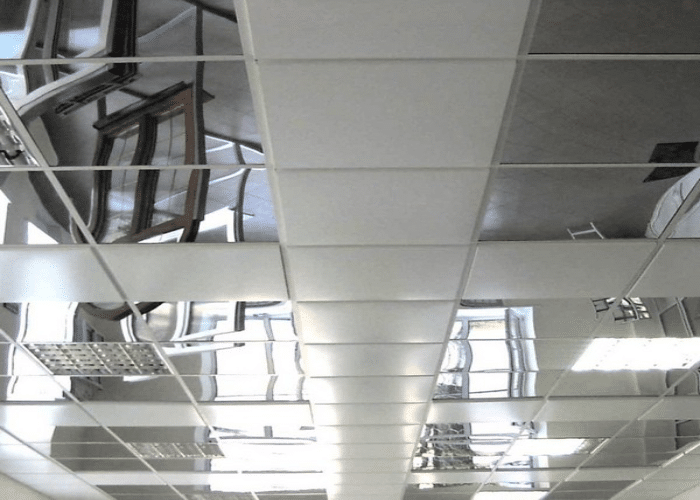
Install small mirrored tiles or panels on the ceiling to reflect extra light downward. It adds the perception of height in a cramped stairwell. For a more 3D illusion, line coffered or cover ceilings with mirrors. It makes plain ceilings seem more ornate.
Integrate mirrored sections strategically rather than overwhelming the whole ceiling. Mirrored ceilings work best on plain white backgrounds, not heavily textured or colored ceilings that will visually compete.
7. Frame Views and Perspectives
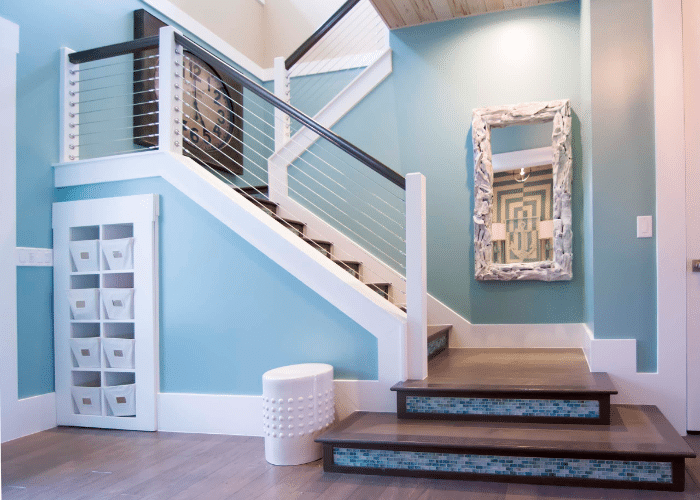
Place an oval or rectangular mirror at stair landings to frame views of doorways, architectural features, and lighting fixtures as you ascend and descend. Like a piece of art, the mirror encapsulates appealing vistas. It draws attention to often overlooked negative spaces and gaps in the architecture.
Consider hanging the mirror on a chain or pivot to allow angle adjustments to frame views. Place decorative objects like sculptures or plants in front of the mirror to enhance the layered look.
Conclusion
By carefully considering lighting, sightlines, and proportions, mirrors enhance staircases beyond simply checking your outfit on the way out. The reflective surfaces creatively expand and accentuate architecture, light, and decor details for added style and visual oomph. Strategically placed mirrors lend beauty, depth, and artistry to any stairwell. Let your staircase shine differently, and also, let it reflect a different kind of beauty.

